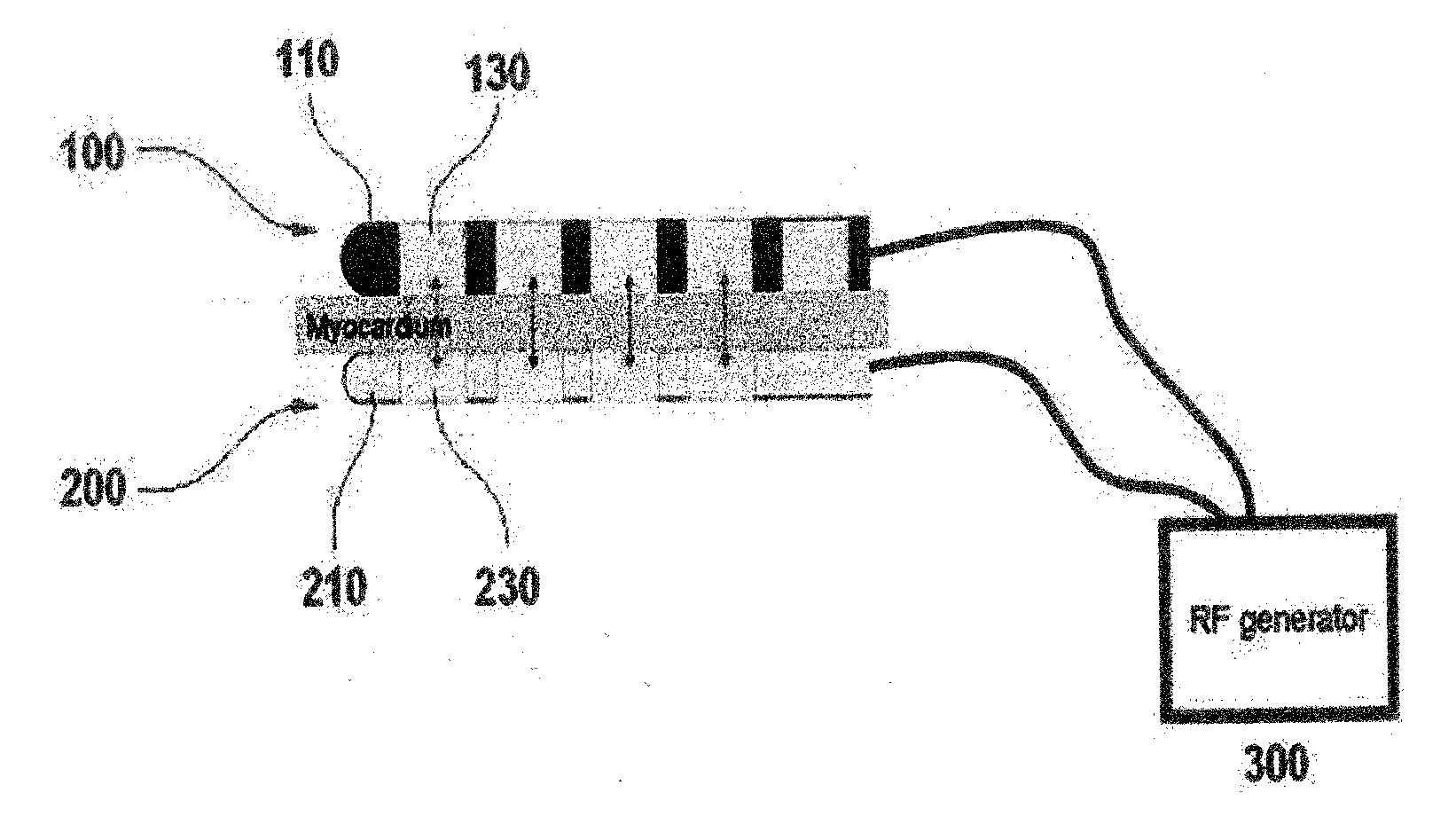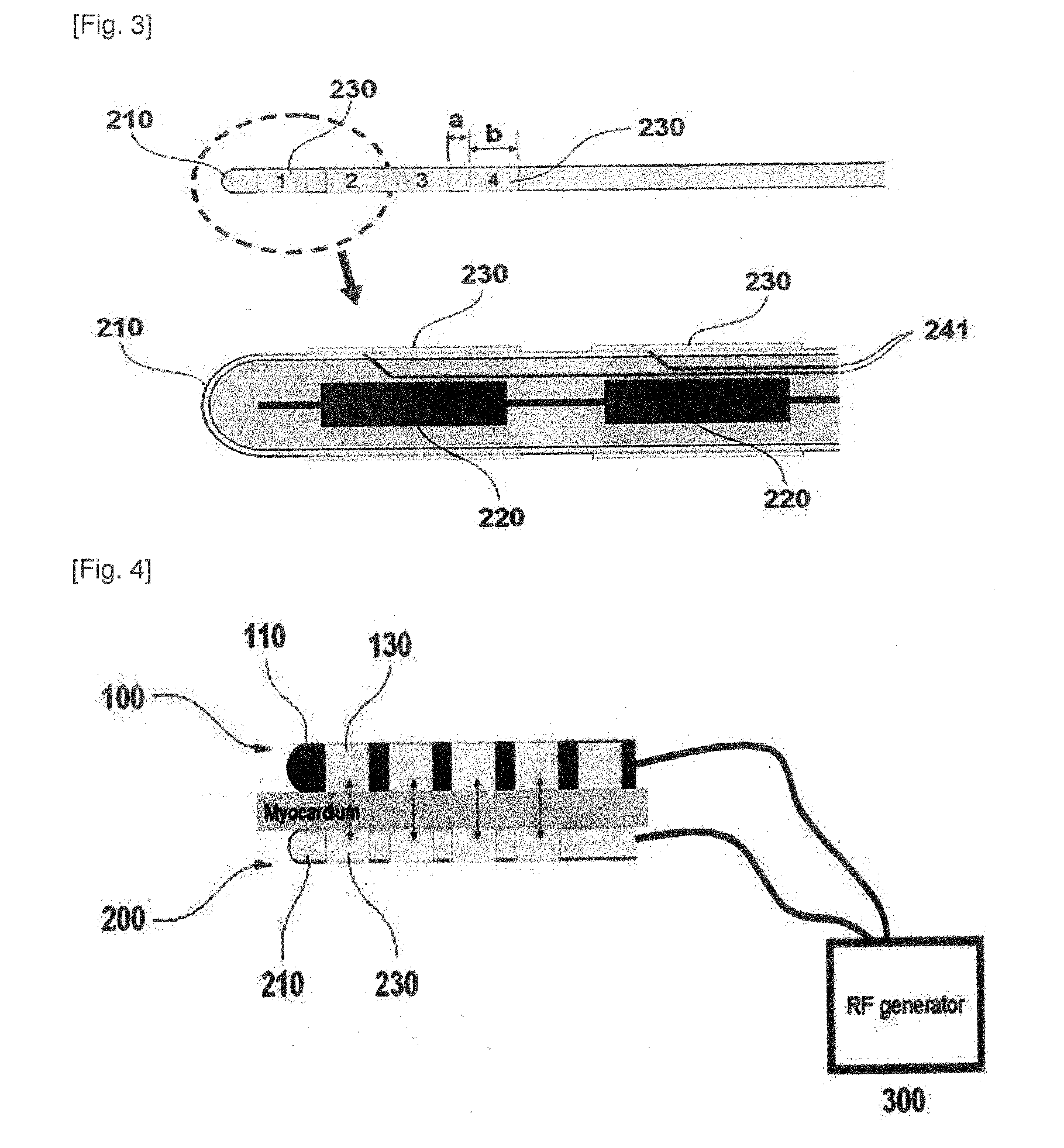Magnetically-coupled bipolar radiofrequency ablation catheter
a radiofrequency ablation and magnetization technology, applied in the field of radiofrequency ablation catheters, can solve the problems of 5% chance of recurrence, difficult and dangerous procedures, and so as to increase the success rate, increase the adhesive force of myocardial tissue, and create transmural lesions more completely and easily
- Summary
- Abstract
- Description
- Claims
- Application Information
AI Technical Summary
Benefits of technology
Problems solved by technology
Method used
Image
Examples
example 1
Comparison of the Efficacy for Creating a Transmural Lesion
[0065]This experiment was performed to explore the efficacy of a magnetically-coupled bipolar catheter (MB) of the present invention in comparison with conventional unipolar (UA)or bipolar (BA) radiofrequency ablation catheters.
[0066]Neodymium magnets assembled in ablation catheters were used to facilitate tissue contact in a bipolar radiofrequency ablation system. In vitro sheets of porcine skeletal muscle with 10-mm thickness were ablated with a unipolar RF ablation catheter (UA), bipolar ablation system using a pair of catheters (BA), and magnetic bipolar system (MB) according to the present invention. One side of a skeletal-muscle sheet was exposed to saline with 37° C. and flow of 37 cm / sec mimicking LV endocardial surface. Another side of a sheet was exposed to air with same temperature mimicking epicardial surface. Five ablation lesions were created in each condition. Ablated tissues were fixed with 10% formalin and l...
PUM
 Login to View More
Login to View More Abstract
Description
Claims
Application Information
 Login to View More
Login to View More - R&D
- Intellectual Property
- Life Sciences
- Materials
- Tech Scout
- Unparalleled Data Quality
- Higher Quality Content
- 60% Fewer Hallucinations
Browse by: Latest US Patents, China's latest patents, Technical Efficacy Thesaurus, Application Domain, Technology Topic, Popular Technical Reports.
© 2025 PatSnap. All rights reserved.Legal|Privacy policy|Modern Slavery Act Transparency Statement|Sitemap|About US| Contact US: help@patsnap.com



